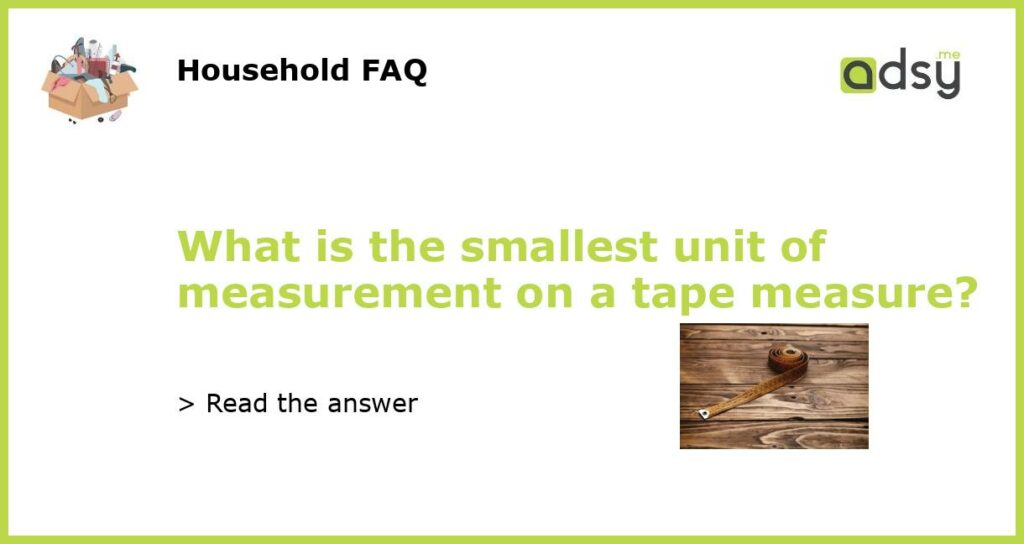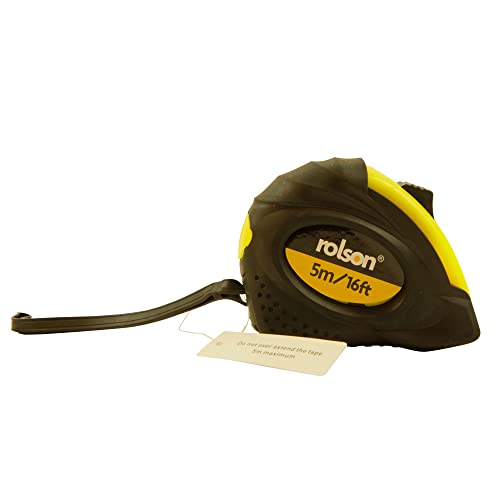What is the smallest unit of measurement on a tape measure?
When it comes to measuring length, a tape measure is one of the most commonly used tools. However, have you ever wondered what the smallest unit of measurement on a tape measure is? In this article, we will explore the answer to this question and provide you with a better understanding of the precision of tape measures.
The Basics of Tape Measures
Before we delve into the smallest unit of measurement, let’s start by understanding the basics of tape measures. Tape measures are flexible rulers that are typically made of metal or plastic. They are designed with markings that represent units of measurement, such as inches, centimeters, or feet. These markings help users accurately measure objects or spaces.
The Smallest Unit: Fractions and Decimals
The smallest unit of measurement on a tape measure can vary depending on the type of tape measure being used. In some cases, tape measures may use fractions as the smallest unit, while others may use decimals.
1. Tape Measures with Fractions: Some tape measures are labeled with fractions and use them as the smallest unit of measurement. For example, a tape measure might have markings for 1/16 of an inch, which means it can measure objects or spaces with a precision of 1/16 of an inch. This level of precision allows for more accurate measurements.
2. Tape Measures with Decimals: On the other hand, some tape measures use decimals as the smallest unit of measurement. These tape measures may have markings for increments such as 0.01 inches or 0.1 centimeters. The use of decimals provides a higher level of precision compared to fractions, as it allows for more precise measurements.
Understanding Tape Measure Accuracy
While tape measures are designed to provide accurate measurements, it’s important to note that they may not always be 100% precise. Several factors can affect the accuracy of tape measures, including the quality of the tape measure and how it is used.
1. Quality of the Tape Measure: The accuracy of a tape measure can be influenced by its quality. Cheaper tape measures may not be as precise as higher-quality ones. It’s important to invest in a reliable and well-made tape measure to ensure accurate measurements.
2. User Technique: The way a tape measure is used can also impact its accuracy. If a tape measure is not held firmly against the object being measured or if it is stretched or bent, the measurements may be slightly off. It’s important to use proper technique when using a tape measure to ensure accurate results.
Choosing the Right Tape Measure
When it comes to choosing the right tape measure, consider the level of accuracy you require for your measurements. If you need precise measurements, opt for a tape measure with smaller increments, such as those with markings for fractions or decimals.
Additionally, consider the quality of the tape measure. Look for one that is durable, easy to read, and has a locking mechanism to hold the tape in place once a measurement is taken.
The smallest unit of measurement on a tape measure can vary depending on the type of tape measure being used. Some tape measures use fractions, such as 1/16 of an inch, as the smallest unit, while others use decimals, such as 0.01 inches or 0.1 centimeters. Understanding the level of accuracy and precision you require for your measurements will help you choose the right tape measure for your needs.






